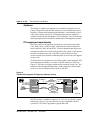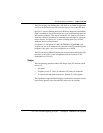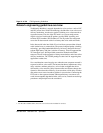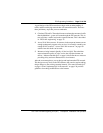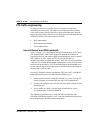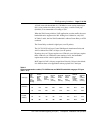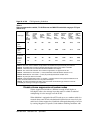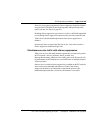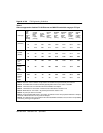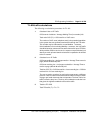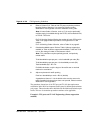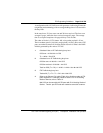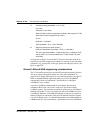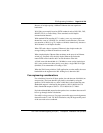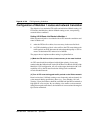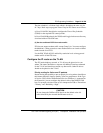
Page 80 of
378
ITG Engineering Guidelines
553-3001-202 Standard 1.00 April 2000
Table 6
Silence suppression disabled T-LAN Ethernet and WAN IP bandwidth usage per ITG port
Codec type
Codec
Multi -
frame
duration
in ms
(payload)
(one way)
Voice/fax
payload
Multi -
frame
in bytes
(one way)
IP voice
packet in
bytes
(one way)
Ethernet
voice
packet in
bytes
(one way)
Bandwidth
use on
T-LAN in
kbit/s
(two way)
Bandwidth
use on
WAN in
kbit/s
(one way)
WAN with
Frame
Relay
overhead
in kbit/s
(one-way)
WAN with
ATM
overhead
in kbit/s
(one-way)
G.711
(64 kbit/s)
10 80 240 292 233.6 96.0 102.4 127.2
20 160 400 452 180.8 80.0 83.2 106.0
30 240 560 612 163.2 74.6 76.6 98.9
G.729AB/
G.729A
(8kbit/s)
10 10 100 152 121.6 40.0 46.4 84.8
20 20 120 172 68.8 24.0 27.2 42.4
30 30 140 192 51.2 18.6 20.8 28.3
G.723.1
(5.3
kbit/s)
30 20 120 172 45.8 16.0 18.1 28.3
G723.1
(6.3
kbit/s)
30 24 128 180 48.0 17.0 19.2 28.3
T.30/T.38
G3 Fax
Modem
14.4
Kbit/s
16.6 30 70 96 46.3 33.7 37.5 50.9
25 30 70 96 30.7 22.4 25.0 33.9
Note 1:
Based on voice multiframe encapsulation for Realtime Transport Protocol per H.323 V2.
Note 2:
The bolded rows contain the default payload/packet size for each codec in the MAT.
Note 3:
T-LAN data rate is the effective Ethernet bandwidth consumption.
Note 4:
T-LAN kbit/s for voice traffic = 2*Ethernet frame bits*8/frame duration in ms
Note 5:
WAN kbit/s for voice traffic = IP packet bytes*8/frame duration in ms
Note 6:
24 ports per card for all codecs
Note 7:
Overhead (RTP/UDP header + IP header) of packets over the voice payload multiframe is 40 bytes;
overhead of Ethernet frame over IP packet is 26 bytes.
Note 8:
An Interframe gap is not included in the above bandwidth calculation, because of the low probability
of occurring in this type of application.



